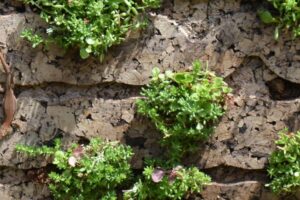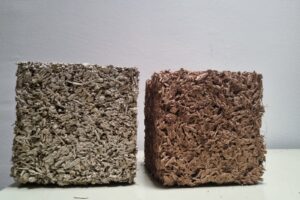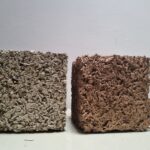
BioSAFE: Bio-sustainable solutions to improve the acoustic performance and fire resistance of building envelopes
October 22, 2025
La Volta: an architectural symbol for Barcelona combining traditional construction and contemporary innovation
October 28, 202527/10/2025
Researchers from the Architecture, Energy and Environment (AiEM) group at the Universitat Politècnica de Catalunya - BarcelonaTech (UPC), together with Sempergreen, have developed SATE-VEG, an external thermal insulation system with a vegetal coating that offers seasonally adaptive thermal behaviour, enhances urban biodiversity and promotes positive health effects. The system is made from organic materials, requires low maintenance and consumes minimal water.
In many European cities, especially in older buildings, energy renovation is necessary to address the climate emergency. The 20th-century urban model, with its limited use of biomaterials, has increased pollution and overlooked both citizen wellbeing and environmental balance. Furthermore, the loss of urban biodiversity encourages the emergence of pests and creates additional pressure on ecosystems.
An effective response to this situation is the implementation of external thermal insulation systems to improve building energy performance alongside the integration of vegetation into the built environment, providing environmental and biophilic benefits for citizens.
In this context, SATE-VEG emerges as an innovative external thermal insulation system integrating a living vegetal coating, acting as a double-impact techno-environmental solution: it improves energy efficiency while contributing to urban renaturalisation. Composed of 4 layers (from outside to inside: sedum —succulent plants—, outer cork, coconut substrate and inner cork), it is designed for both new construction and energy refurbishment of existing buildings. It is applied to façades and party walls and is supplied as a prefabricated, dry-assembled system that is easy to dismantle and reuse, made entirely from renewable organic materials.
This coating provides variable insulation behaviour according to the season. In summer, the higher water content reduces the insulating capacity of the substrate and facilitates heat dissipation, while the lush plant cover provides shade and stabilises temperature. In winter, the lower water content increases the insulating performance of cork and the coconut substrate, while the reduced vegetation density allows greater solar radiation to reach the façade. Throughout the year, the green cover naturally follows the seasonal cycle, delivering health benefits, supporting biodiversity and helping mitigate the heat island effect.
The succulent species used, native to the Mediterranean climate, ensure low maintenance throughout the year. Their resilience prevents the intrusion of external vegetation and eliminates the need for systematic pruning.
Unlike vertical gardens, SATE-VEG incorporates vegetation as the final finish itself, harnessing its bioclimatic qualities without forcing continuous artificial growth.
SATE-VEG improves conventional SATE (External Thermal Insulation System) solutions by combining insulation performance with the benefits of green façades. At the same time, the integration of native plant species functions as an urban microhabitat, increases biodiversity, and provides psychological and aesthetic benefits, strengthening the biophilic connection between the building and its surroundings.
The SATE-VEG project, developed by the AiEM research group, has been awarded the 2025 APCE Technological Innovation Prize. The project team includes Cristina Pardal, Enrique Corbat, Oriol Roig and Andrés Echarri, from the Department of Architectural Technology; Toni Amich, from the company Sempergreen; and Ignasi Fontcuberta, from BIGA studio.
Impact
SATE-VEG delivers benefits that go beyond conventional insulation and aligns with current urban priorities and European regulations:
- Seasonal energy efficiency:
The system adapts its thermal performance depending on the season, reducing heat losses in winter and preventing overheating in summer. - Urban heat island mitigation:
The vegetation creates an active bioclimatic layer that cools the façade and improves the urban microclimate. - Integrated biodiversity in buildings:
The use of low-maintenance succulent species promotes stable and resilient microecosystems. - Wellbeing and biophilic connection:
The plant cover enhances people’s perception of their surroundings and strengthens the emotional bond between citizens and the spaces they inhabit. - Circular economy and low environmental impact:
Its organic and prefabricated composition enables dismantling and reuse, minimising waste and embodied emissions.
Funding
SATE-VEG has received support from AGAUR, and the collaboration of Sempergreen. It was funded by the Agency for the Management of University and Research Grants (AGAUR) with a total of €20,000, which enabled, within nine months (October 2022 – July 2023), the achievement of a Technology Readiness Level corresponding to validation in a laboratory / pilot environment. The project is currently being further developed thanks to the additional support received after being selected as a project of interest as part of Barcelona’s designation as World Capital of Architecture by the UIA for 2026.

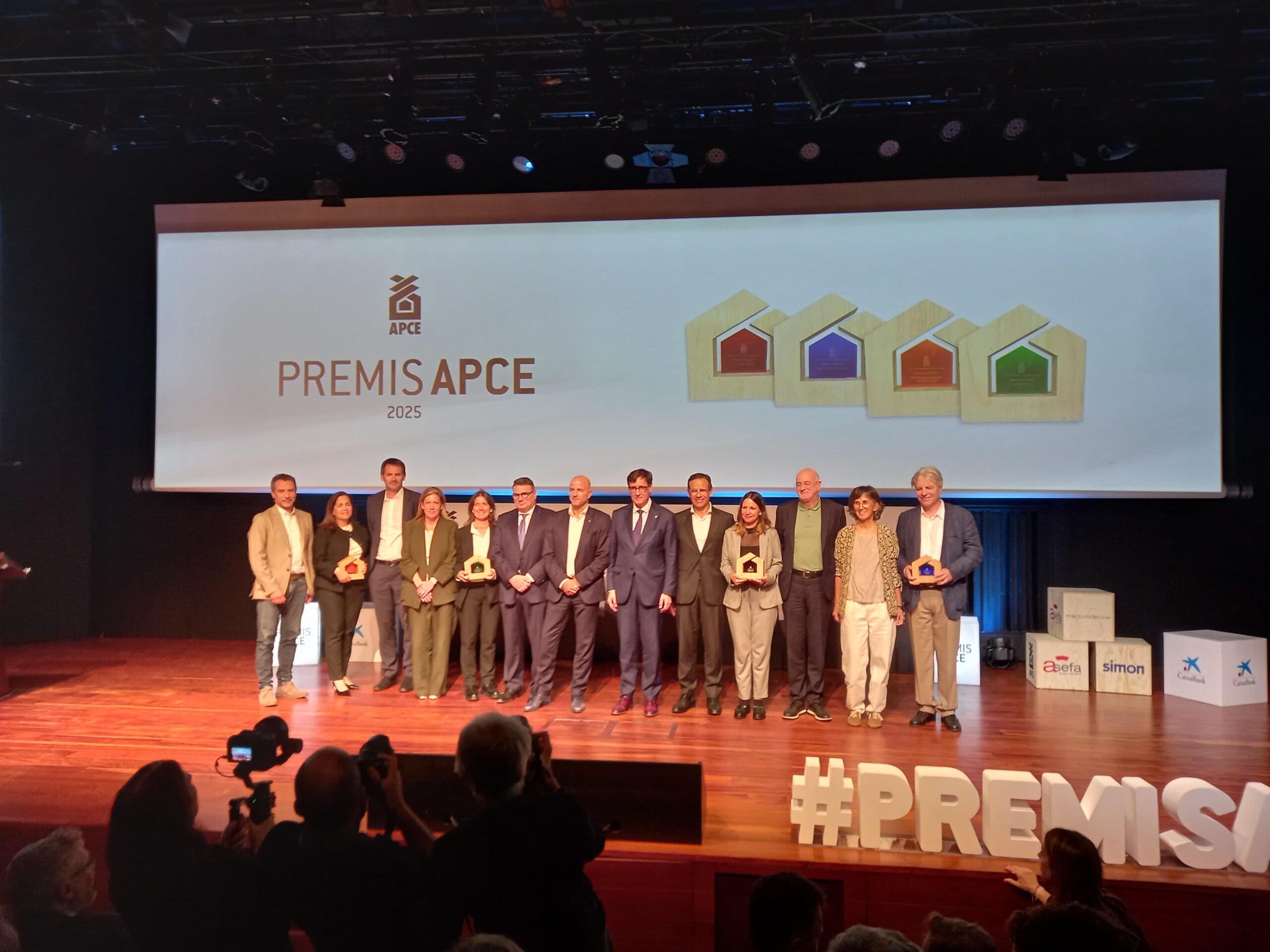
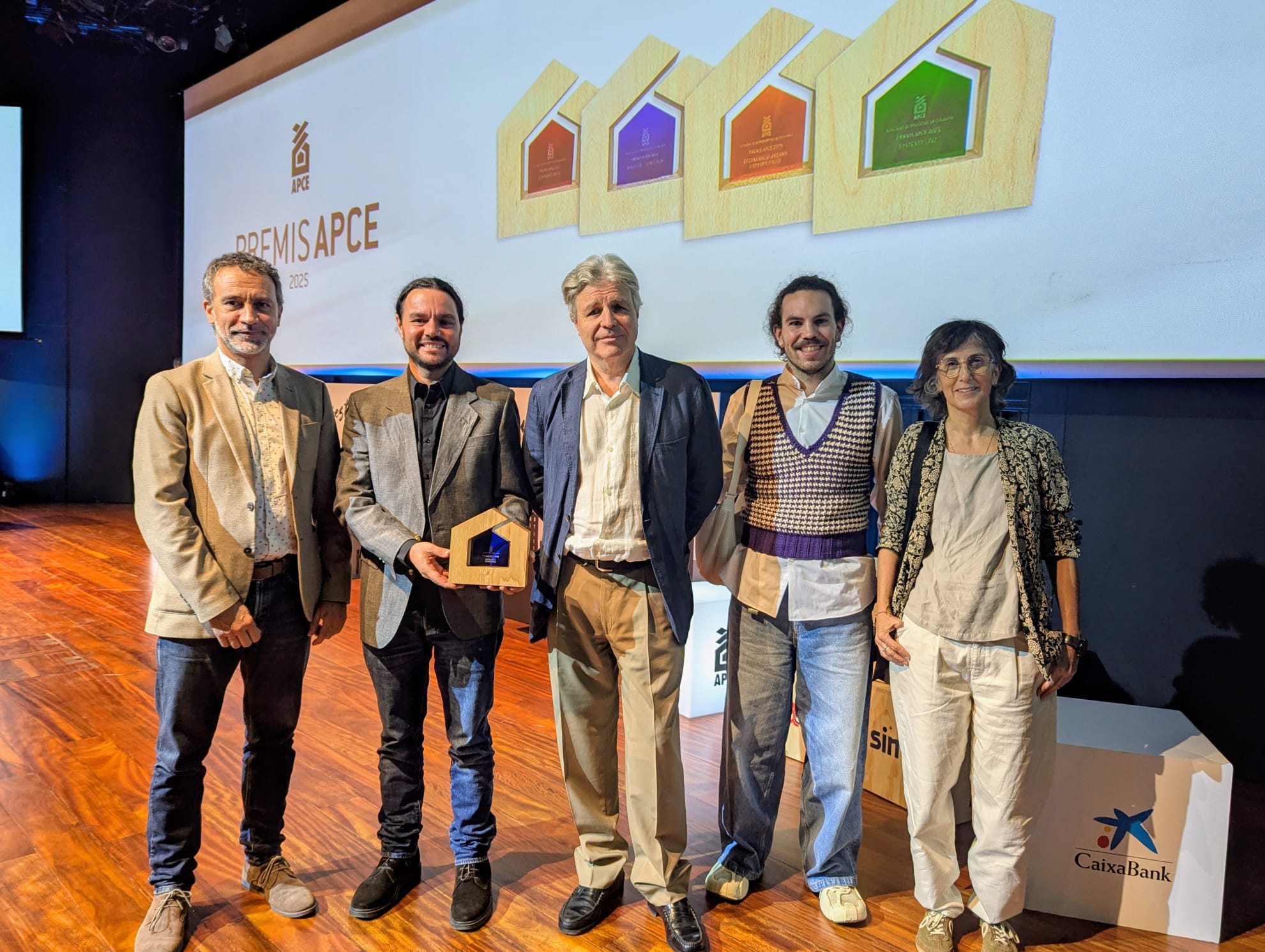

Related Projects
- A research team from the inLab FIB at the Universitat Politècnica de Catalunya - BarcelonaTech (UPC), together with the Asociación de Personas con Movilidad Reducida (AsoPMR), has taken part in the Spot4Dis project to enhance the mobility and autonomy of people with reduced mobility.
- The La Volta project foresees the construction of a large Catalan vault pergola within the Llars Mundet campus, in the Montbau neighbourhood (Horta-Guinardó district). This structure will become a new architectural landmark for Barcelona, combining traditional construction techniques with contemporary innovation. The project involves the Rehabilitation and Architectural Restoration Research Group (REARQ), at the Universitat Politècnica de Catalunya - BarcelonaTech (UPC), and is led by the Architects’ Association of Catalonia (COAC) and the Barcelona Provincial Council.
SATE-VEG: A system for energy renovation of buildings that helps reduce the urban heat island effect
Researchers from the Architecture, Energy and Environment (AiEM) group at the Universitat Politècnica de Catalunya - BarcelonaTech (UPC) have developed SATE-VEG, an external thermal insulation system with a vegetal coating that offers seasonally adaptive thermal behaviour, enhances urban biodiversity and promotes positive health effects. The system is made from organic materials, requires low maintenance and consumes minimal water.- A research team from the Interdisciplinary Group on Building Science and Technology (GICITED) at the Universitat Politècnica de Catalunya – BarcelonaTech (UPC) is leading the BioSAFE project, which aims to develop sustainable building envelopes —mainly façades— designed according to sustainability, comfort and safety criteria, with particular attention to their acoustic behaviour and fire performance.



